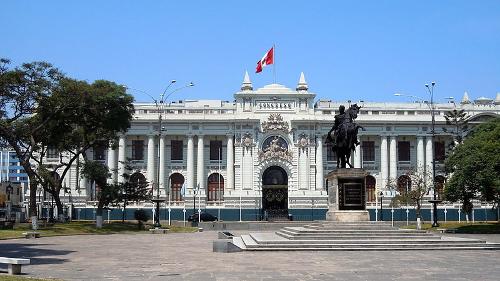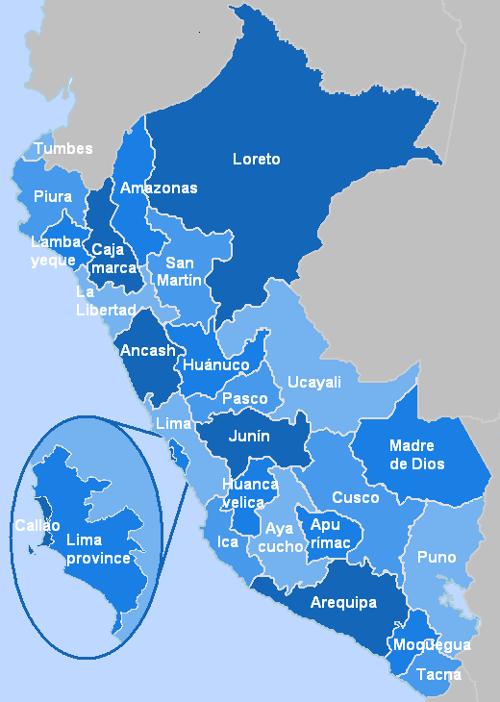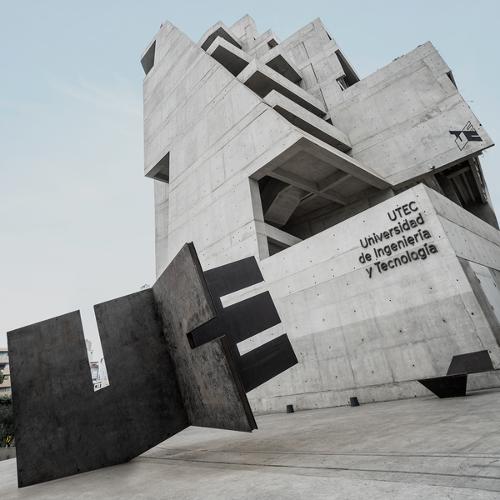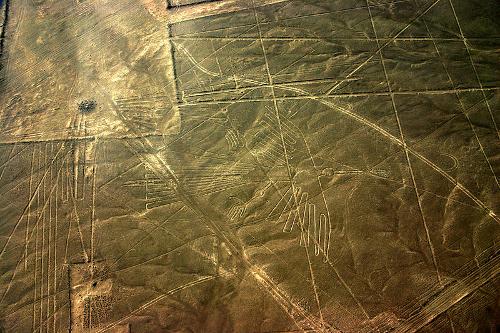PERU
Society

Society

Cities in PERU
| Lima |
Society
State structure
 Congress building PeruPhoto:Protontorniyo CC 3.0 no changes made
Congress building PeruPhoto:Protontorniyo CC 3.0 no changes made
According to the Constitution of December 29, 1993, Peru is a presidential republic and legislative power rests with the Congress or "Congreso Constituyente Democratíco". Congress consists of a 120-member Chamber of Deputies who are elected by direct elections for a period of 5 years. 25 members are directly appointed by the House itself.
Executive power rests with the President, who is elected for a term of office of 5 years. The incumbent president was already allowed to go for a second term for a new term, in 2000 Congress approved a possible third term. If a candidate obtains 56% or more of the votes in direct elections, he is elected, with a lower vote percentage a second round of voting will follow. Since April 2001 elections have been made according to a district system. Voting is compulsory for citizens aged 18 and older (since 1980 also for illiterate people).
The president appoints the prime minister and also heads the armed forces. He also has the power to block legislation if the executive disagrees. For the current political situation see chapter history.
Administrative division
 Peru Administrative DivisionPhoto:AgainErick CC 3.0 no changes made
Peru Administrative DivisionPhoto:AgainErick CC 3.0 no changes made
Peru is administratively divided into 25 regions and further divided into 156 provinces. The regions are governed by appointed prefects, the districts by a directly elected mayor.
overview regions:
| region | capital xity | surface | population |
| Amazonas | Chachapoyas | 39.249 km2 | 395.000 |
| Ancash | Huaráz | 35.826 km2 | 1.050.000 |
| Apurimac | Abancay | 20.896 km2 | 420.000 |
| Arequipa | Arequipa | 63.345 km2 | 1.040.000 |
| Ayacucho | Ayacuchu | 43.814 km2 | 530.000 |
| Cajamarca | Cajamarca | 33.247 km2 | 1.380.000 |
| Callao | Callao | 147 km2 | 740.000 |
| Cusco | Cusco | 71.892 km2 | 1.140.000 |
| Huancavelica | Huancavelica | 22.131 km2 | 425.000 |
| Huánuco | Huánaco | 36.938 km2 | 750.000 |
| Ica | Ica | 21.328 km2 | 635.000 |
| Junín | Huancayo | 44.410 km2 | 1.170.000 |
| La Libertad | Trujillo | 25.570 km2 | 1.450.000 |
| Lambayegue | Chiclayo | 14.231 km2 | 1.055.000 |
| Lima | Lima | 34.802 km2 | 7.200.000 |
| Loreto | Iquitos | 368.852 km2 | 850.000 |
| Madre de Dios | Puerto Maldonado | 85.138 km2 | 80.000 |
| Moquegua | Moquegua | 15.734 km2 | 145.000 |
| Pasco | Cerro de Pasco | 25.320 km2 | 250.000 |
| Piura | Piura | 35.892 km2 | 1.550.000 |
| Puno | Puno | 71.999 km2 | 1.200.000 |
| San Martín | Moyobamba | 51.253 km2 | 700.000 |
| Tacna | Tacna | 16.076 km2 | 265.000 |
| Tumbes | Tumbes | 4.669 km2 | 185.000 |
| Ucayali | Pucallpa | 102.411 km2 | 400.000 |
Education
From 1972, education has been compulsory for children between the ages of seven and sixteen, but unfortunately the educational level in Peru is among the lowest in Latin America. Pupil dropout rate in primary school is up to 40%, and few pupils continue to secondary school. Of all six to eleven year olds, mainly outside the big cities, about 12.7% are without education. In 2000 Peru had about 50,000 educational institutions.
 University Lima, PeruPhoto: Utec2016 CC 4.0 International no changes made
University Lima, PeruPhoto: Utec2016 CC 4.0 International no changes made
One third of the fifty or so universities are located in the capital Lima and about half a million students follow a university degree. Qualitatively much better is education at private universities, which, however, is reserved for only a few.
Approx. 13% of the population is illiterate, the majority of which are women. In rural areas, 45% of women cannot read, against 11% of men.
Typically Peru
NAZCA LINES
Nazca is located in the south of Peru, not far from the Pacific Ocean on the Pampa de San José. It is the place of the mysterious drawings that have given rise to the most diverse theories. The lines and figures of Nazca were protected by UNESCO as a cultural world heritage site in December 1994. The lines were discovered in 1939 by the American Paul Kosok of Long Island University.
 Nazca Lines, PeruPhoto: Paul Williams CC 2.0 no changes made
Nazca Lines, PeruPhoto: Paul Williams CC 2.0 no changes made
The Nazca lines are a series of drawings of birds (including pelican, hummingbird), other animals and geometric figures such as triangles, rectangles and spirals, sometimes with a diameter of up to 300 meters and furthermore there are straight lines of ten kilometers in length.
The figures were made by excavating the desert soil about ten centimeters, revealing a less weathered and lighter colored part of the soil.
It is still unclear who made the enormous drawings. Some archaeologists think of it as an astronomical calendar, others think of copies of certain star constellations that could be used to record the exact movement of the stars. Fantasies think about runways for foreign airships! The figures are believed to have been made between 200 BC. and 600 after. Chr.
Nobel Prize for Literature
The Peruvian writer Mario Vargas Llosa recieved the 2010 Nobel Prize in Literature. He was awarded the prize for his striking characterization of power and resistance, the Nobel Committee reported.
 Mario Vargas Llosa, PeruPhoto: Arild Vågen CC 3.0 Unported no changes made
Mario Vargas Llosa, PeruPhoto: Arild Vågen CC 3.0 Unported no changes made
Vargas Llosa considered the award of the Nobel Prize to him as a recognition of Latin American literature and literature in the Spanish language.
Sources
Le Grand, J.W. / Peru : mensen, politiek, economie, cultuur
Koninklijk Instituut voor de Tropen : Novib
Luft, A. / Peru
Elmar,
Lyle, G. / Peru
Chelsea House Publishers,
Peru
Cambium,
Peru, Bolivia
Lannoo
Rensink, E. / Peru
Gottmer,
Te gast in Peru
Informatie Verre Reizen
CIA - World Factbook
BBC - Country Profiles
Copyright: Team The World of Info